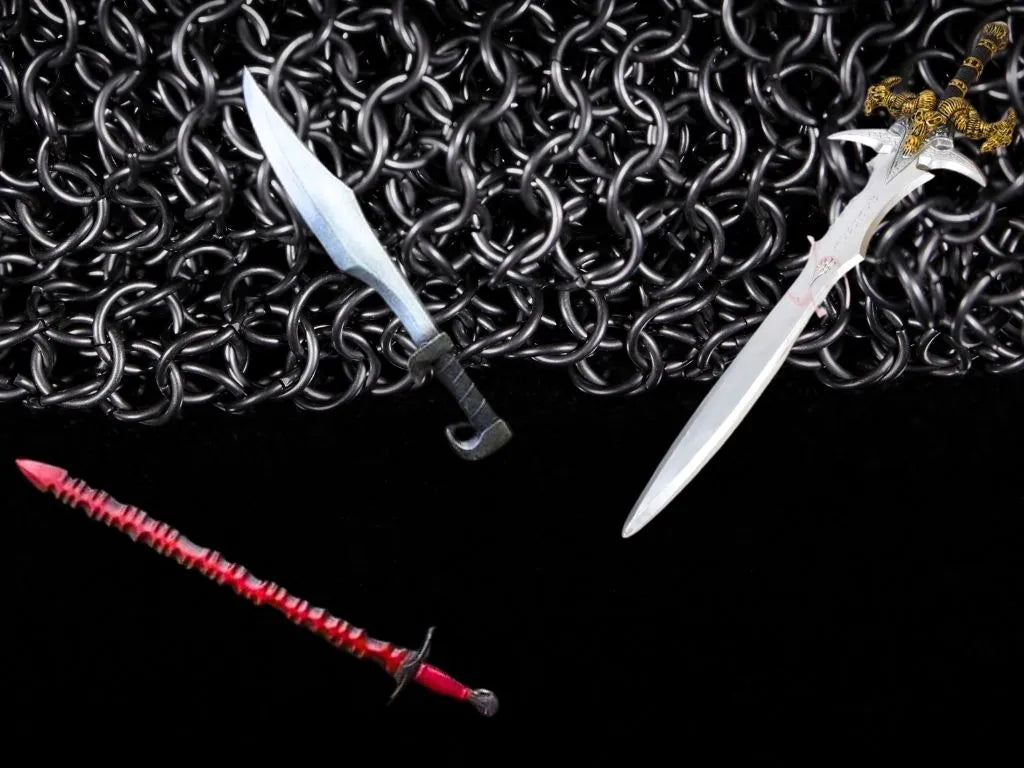From medieval battlefields to Renaissance competitions, armour has witnessed and played a leading role in the evolution of warfare and craftsmanship over the centuries. In this article, we will explore the fascinating world of armour, beyond its protective function, as artistic expressions and testimonies of military history, and how it has left a lasting mark on culture and aesthetics.
History of Armor: Forging Defense and Style Through the Centuries The earliest armor dates back to ancient times, but it was during the Middle Ages that it reached its peak. Initially composed of layers of hardened cloth and leather, armor evolved into intricately designed metal structures. Each piece not only offered protection, but also displayed the wearer’s craftsmanship and wealth.
Check out our armor at: https://espadasymas.com/collections/armaduras
Types of Armor: From Intricate Plate to Artistic Chainmail Armor diversified into a variety of styles depending on the era and region. Full plate armor, such as that worn by medieval knights, offered complete coverage, while chainmail armor was flexible and effective against blows and cuts. Each design reflected not only tactical needs but also stylistic preferences.
The Renaissance of Armor: Elegance and Functionality Fused During the Renaissance, armor reached new heights of elegance and functionality. Italian armorers, in particular, fused protection with fashion, creating armor that was not only effective in combat but also masterpieces of design. Ornamental details and engravings transformed armor into artistic expressions.
Here you will find our complete armor: https://espadasymas.com/collections/armaduras-completes
On the Battlefield: The Tactical Importance of Armor Beyond its imposing appearance, armor played a vital role in survival on the battlefield. Protecting against sword blows, spears, and arrows, these pieces of metal not only protected the warrior’s life but also influenced combat tactics, as armored units could face more risky situations.
Decline and Resurrection: Armor Today With the advent of gunpowder, armor began to decline in use. However, its legacy lived on in culture and the imagination. Today, armor is admired in museums, used in historical reenactments, and prized as decorative items. Additionally, some industries, such as the sport of medieval combat, have seen a resurgence of interest in the functionality of armor.
Armor in Art and Popular Culture: From Museums to Screens Armor has inspired countless works of art, from paintings to sculptures, and has left an indelible mark on popular culture. It appears in films, books, and video games, where its presence evokes an age of knights and heroes. The aesthetic of armor continues to influence contemporary design, fusing history and modernity.
Conclusion: The Enduring Legacy of Armor More than just pieces of metal, armor bears witness to the evolution of warfare, craftsmanship, and military aesthetics throughout the centuries. From medieval battles to the silver screen, armor has stood the test of time as symbols of elegance, strength, and the indomitable spirit of those willing to defend what they believe is right. In every link and plate, armor tells stories of valor, strategy, and the eternal pursuit of perfection in the art of war.
Check out our functional armor:











